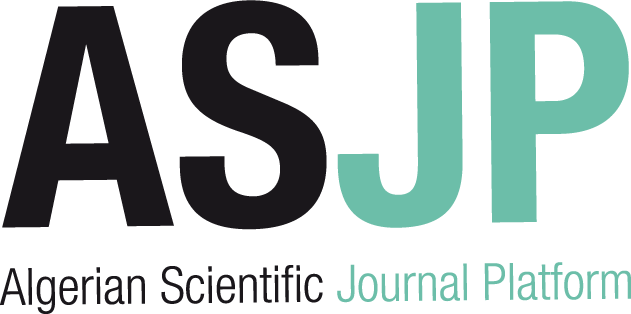[article]
| Titre : |
Aroma enhancement and characterization of the absolute osmanthus fragrans lour. |
| Type de document : |
texte imprimé |
| Auteurs : |
Wei-Rong Yao, Auteur ; Yin-Zhu Zhang, Auteur ; Yi Chen, Auteur |
| Article en page(s) : |
pp. 97-102 |
| Note générale : |
Génie Chimique |
| Langues : |
Anglais (eng) |
| Mots-clés : |
Osmanthus fragrans Oleaceae Absolute composition Glycosidically bound volatiles Megastigma-4,6(E) 8(E)-triene Dihydro-β -ionol (E)-β -ionone |
| Index. décimale : |
646 |
| Résumé : |
In this paper, β-glucosidase hydrolysis approach was applied on Osmanthus fragrans Lour. flowers for the aroma enhancement of the extract.
The hydrolysis and extraction conditions, including enzyme amount, temperature, time, rate of agitation, buffer pH, buffer volume, extraction time, extraction temperature and petroleum ether volume, were optimized.
The crude extract (concrete) and refined extract (absolute) under optimum conditions had increased yields of 0.42% and 0.25%, which were 147.1% and 177.8%, respectively, as compared with the procedure without the β-glucosidase hydrolysis.
Analyses showed no obvious qualitative differences in the volatiles produced with and without enzymatic hydrolysis.
However, the amount of typical aroma components significantly increased in the hydrolysis sample.
As compared with the no-hydrolysis control, the first four aroma components with the most increase were 6,10,14-trimethyl-2-pentadecan-2-one, nonanal, dihydro-β-ionol and (E)-β-ionone in the hydrolysis sample.
Megastigma-4,6(E),8(E)-triene was only found in the hydrolysis sample, but the amount of trans-linalool oxide, cis-linalool oxide and dihydro-3-oxo-ionol decreased.
Organoleptic assessment supported that the hydrolysis sample produced a stronger fragrance. |
| DEWEY : |
665 |
| ISSN : |
1041-2905 |
| En ligne : |
http://www.jeoronline.com/archive/detail/50 |
in The journal of essential oil research > Vol. 22 N° 2 (Mars/Avril 2010) . - pp. 97-102
[article] Aroma enhancement and characterization of the absolute osmanthus fragrans lour. [texte imprimé] / Wei-Rong Yao, Auteur ; Yin-Zhu Zhang, Auteur ; Yi Chen, Auteur . - pp. 97-102. Génie Chimique Langues : Anglais ( eng) in The journal of essential oil research > Vol. 22 N° 2 (Mars/Avril 2010) . - pp. 97-102
| Mots-clés : |
Osmanthus fragrans Oleaceae Absolute composition Glycosidically bound volatiles Megastigma-4,6(E) 8(E)-triene Dihydro-β -ionol (E)-β -ionone |
| Index. décimale : |
646 |
| Résumé : |
In this paper, β-glucosidase hydrolysis approach was applied on Osmanthus fragrans Lour. flowers for the aroma enhancement of the extract.
The hydrolysis and extraction conditions, including enzyme amount, temperature, time, rate of agitation, buffer pH, buffer volume, extraction time, extraction temperature and petroleum ether volume, were optimized.
The crude extract (concrete) and refined extract (absolute) under optimum conditions had increased yields of 0.42% and 0.25%, which were 147.1% and 177.8%, respectively, as compared with the procedure without the β-glucosidase hydrolysis.
Analyses showed no obvious qualitative differences in the volatiles produced with and without enzymatic hydrolysis.
However, the amount of typical aroma components significantly increased in the hydrolysis sample.
As compared with the no-hydrolysis control, the first four aroma components with the most increase were 6,10,14-trimethyl-2-pentadecan-2-one, nonanal, dihydro-β-ionol and (E)-β-ionone in the hydrolysis sample.
Megastigma-4,6(E),8(E)-triene was only found in the hydrolysis sample, but the amount of trans-linalool oxide, cis-linalool oxide and dihydro-3-oxo-ionol decreased.
Organoleptic assessment supported that the hydrolysis sample produced a stronger fragrance. |
| DEWEY : |
665 |
| ISSN : |
1041-2905 |
| En ligne : |
http://www.jeoronline.com/archive/detail/50 |
|


 Ajouter le résultat dans votre panier Faire une suggestion Affiner la recherche
Ajouter le résultat dans votre panier Faire une suggestion Affiner la rechercheAroma enhancement and characterization of the absolute osmanthus fragrans lour. / Wei-Rong Yao in The journal of essential oil research, Vol. 22 N° 2 (Mars/Avril 2010)











